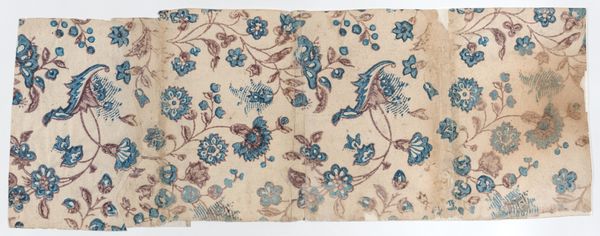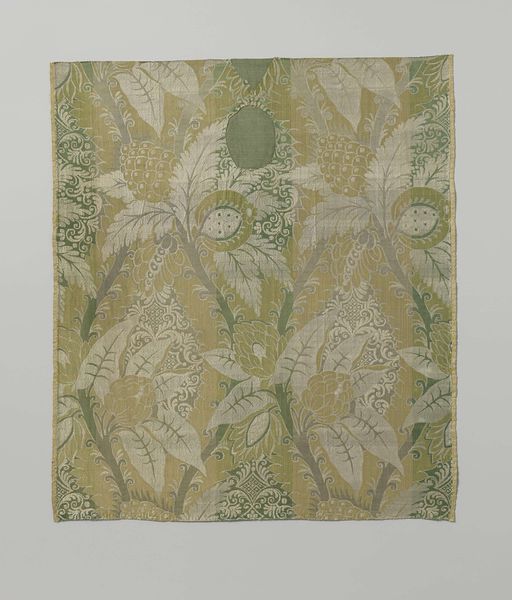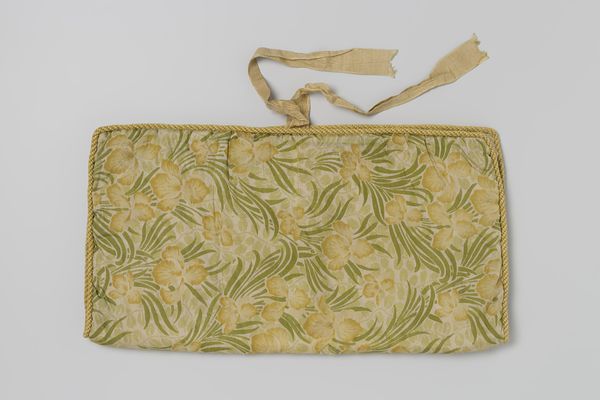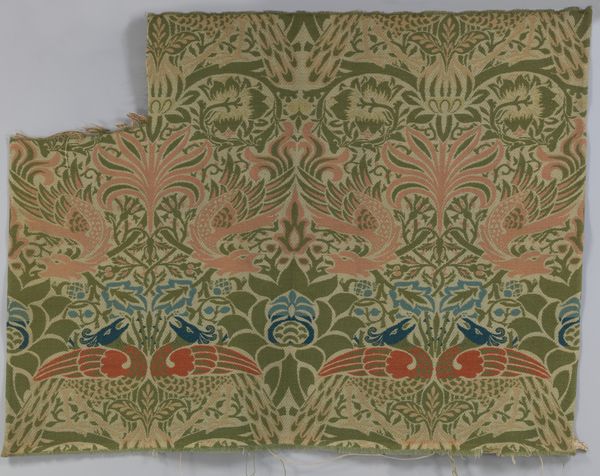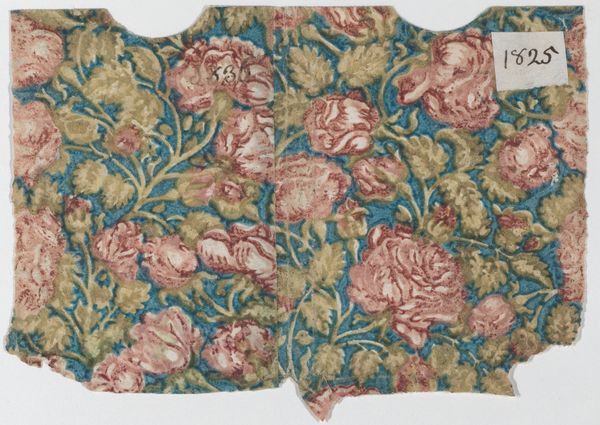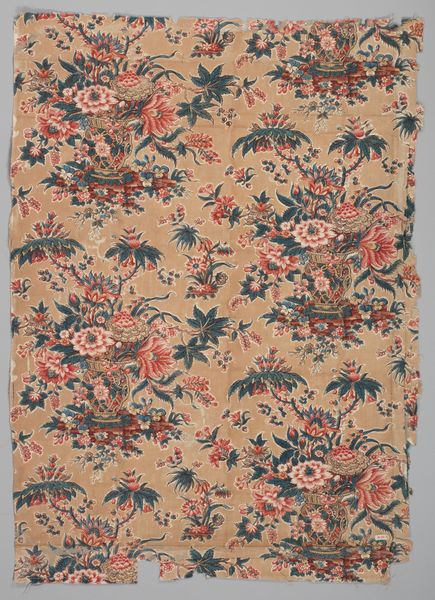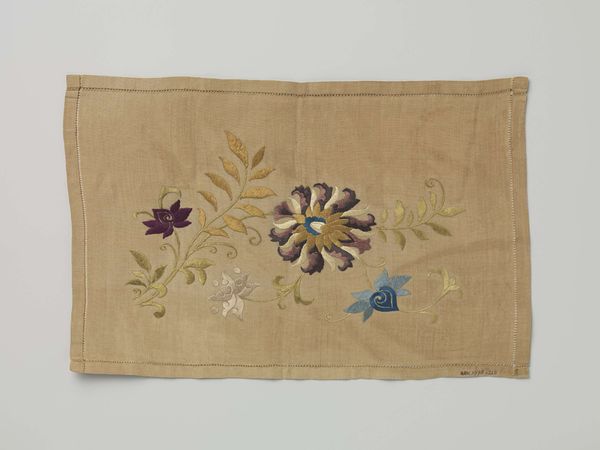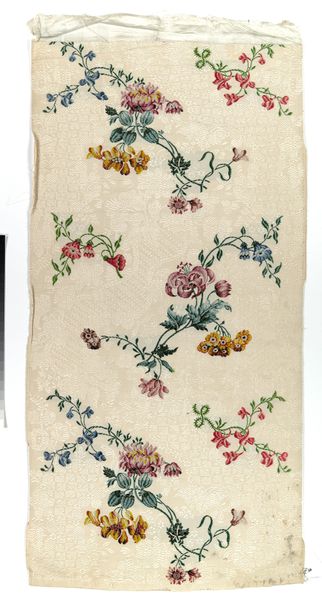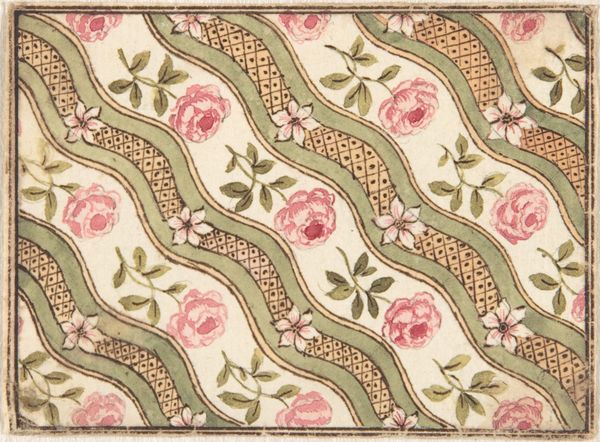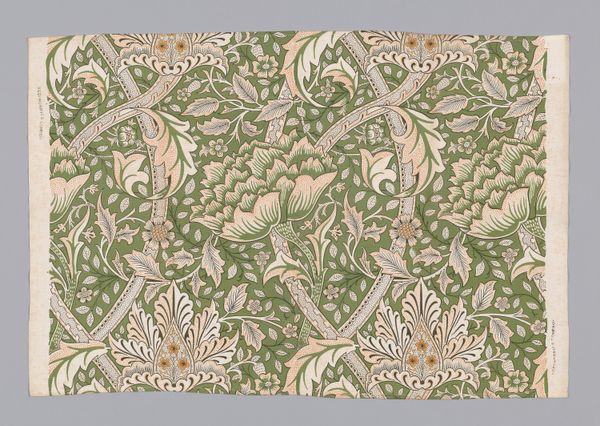
Tas in een rechthoekig model met klep, van groengeel brokaat met een patroon van bloemen en vogels, voorzien van een beurs en spiegel c. 1950
0:00
0:00
weaving, textile
#
fashion mockup
#
pattern
#
weaving
#
textile
#
clothing promotion photography
#
fashion and textile design
#
pattern background
#
ethnic pattern
#
fabric design
#
orientalism
#
repetition of pattern
#
pattern repetition
#
decorative-art
#
imprinted textile
#
layered pattern
Dimensions: length 12.5 cm, width 19.2 cm, height 2 cm
Copyright: Rijks Museum: Open Domain
Editor: This is a bag, made around 1950 by Fa. van Goethem. It’s a rectangular model with a flap, and it's made of green-yellow brocade with a repeating pattern of flowers and birds. It has a purse and a mirror inside. The material is beautiful; the pattern creates a visual texture that seems almost tactile. What are your thoughts on the brocade work itself? Curator: The interest lies in the interplay of color and texture. Consider how the composition relies on the juxtaposition of the verdant ground against the complex floral and avian motifs. How does the repeated pattern, in your opinion, affect the overall impact of the piece? Editor: Well, the repetition does give it a sense of unity and rhythm, almost like wallpaper. Is there any symbolic value in the recurring bird and flower design, or should we think about the pattern in its raw compositional form? Curator: Disregard any external symbolic interpretation and examine instead the structural elements. The weaving creates a complex interplay of light and shadow, with the sheen of the brocade emphasizing the texture. This manipulation of light reinforces the pattern as the central organizing principle of the piece. The tension arises from the contrasting matte areas versus highlights within the woven threads. Do you see how that dictates the overall aesthetic? Editor: Yes, now that you mention it, the contrasting areas do bring focus to the patterned design! So, the art is in the weaving itself. Curator: Precisely. By carefully observing how the materials interact within the formal constraints of the bag's structure, we begin to see where the true artistry resides. Editor: I see the bag in a new light, focusing less on what it represents and more on how the weaving and pattern are used together. Thanks for clarifying that for me. Curator: My pleasure. I appreciate your willingness to engage with the formal aspects of this fascinating object.
Comments
No comments
Be the first to comment and join the conversation on the ultimate creative platform.
